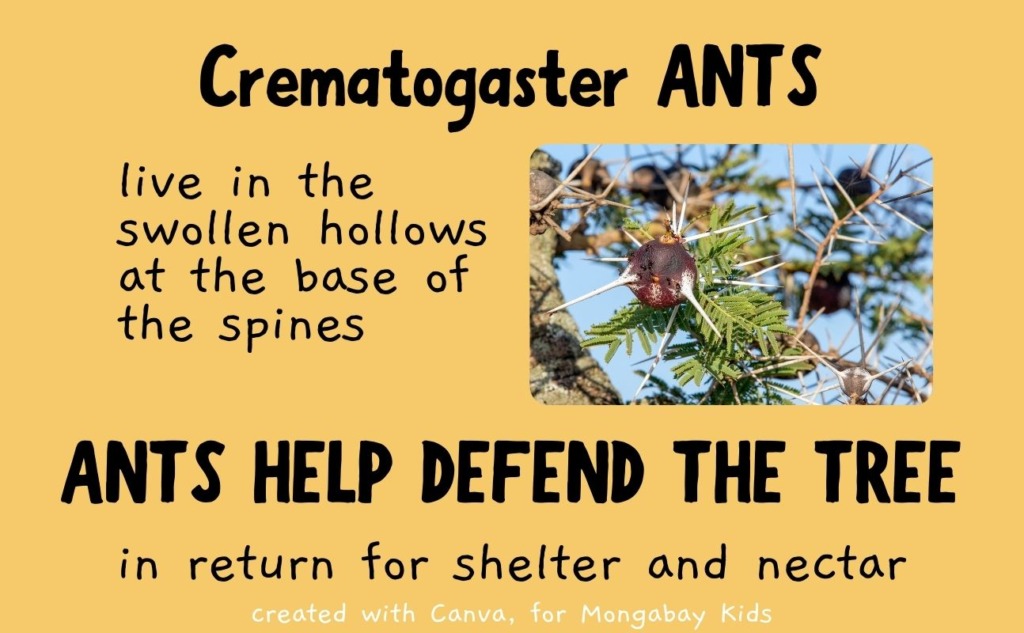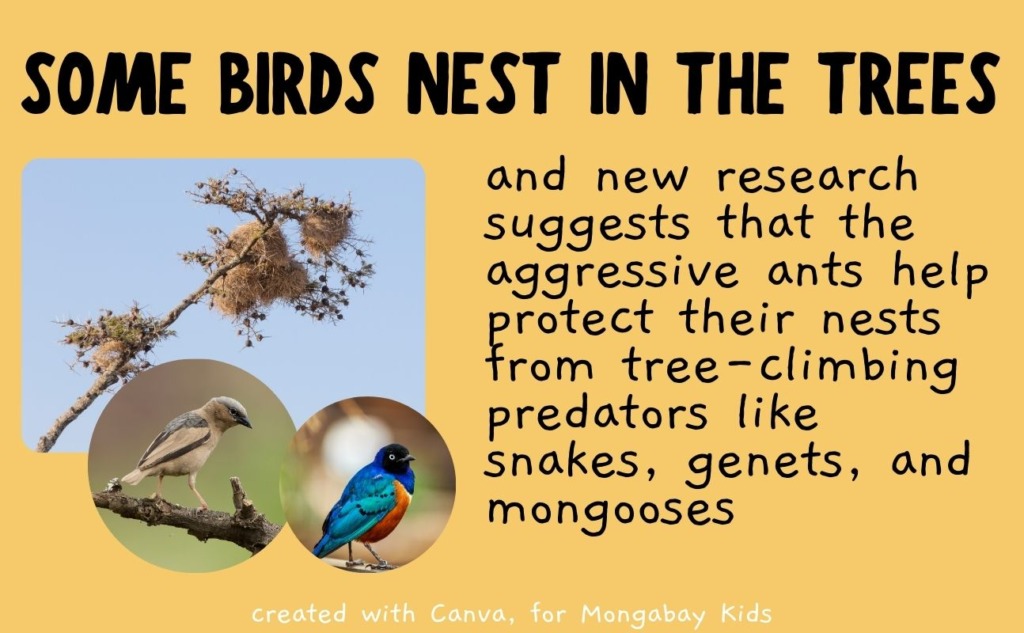
Ants live in the swollen hollows at the base of the whistling thorn’s spines. Image by GRID-Arendal (CC BY-NC-SA 2.0)
Whistling thorn acacias (scientific name: Vachellia drepanolobium) are musical trees. These trees have hollow swellings at the base of some of their spines (thorns). When wind passes through holes in these swellings, the trees whistle.


Whistling thorns grow in Kenya and other parts of East Africa. These trees are a favorite food of elephants and giraffes. To protect themselves from being eaten to death, these trees have evolved sharp spines. They have another defensive strategy too …
Whistling thorn trees have ant guardians! Several types of Crematogaster ants live in the hollow swollen spines on the trees.
Acacia ants will swarm over branches of the acacias and bite elephants or giraffes who try to eat the leaves of the whistling-thorn. Nectar droplets ooze from leaf glands of the acacia, and provide the ants with a sugary diet in return for their work.


Ants, scattering from the broken base of whistling thorn. Image by Christian Peeters via Antwiki (CC BY-SA 4.0)
Now scientists in Kenya have discovered that the ants protect not just the acacias, but also the birds who nest in the trees. They found that some tree-nesting birds prefer to nest in whistling thorns that host the most aggressive ant species. The ants protect the birds against tree-climbing predators.
Superb starlings (Lamprotornis superbus), gray-headed sparrows (Passer griseus), and gray-capped social-weaver birds (Pseudonigrita arnaudi) all get help from acacia ants. Researchers studying whistling thorns in Kenya’s Mpala Research Centre and Conservancy found the birds chose to nest in trees occupied by the two most aggressive species of acacia ants: Crematogaster mimosae and Crematogaster nigriceps.
The researchers surveyed nests within grassy glades in Mpala’s whistling thorn savanna. Social-weavers had built their ball-shaped nests in the same tree. Superb starlings and gray-headed sparrows built one nest per tree.
The study showed that out of 60 nests built by the starlings, sparrows, weavers, and two unknown species, only one was built in a whistling thorn tree occupied by a less aggressive species of acacia ant, Crematogaster sjostedti.

Thanks to the acacia ants, the birds and their young receive protection against predators like snakes and tree-climbing predatory mammals, including snakes, spotted genets (Genetta genetta), and slender mongooses (Herpestes sanguineus).
Wilson Nderitu, a co-author of the study who has researched birds at Mpala in Kenya’s central Laikipia county for 22 years, has witnessed this firsthand.
If mongooses or genets attempt to raid birds’ nests, the parent birds mob the attackers, the trees shake, and the ants are alerted.
“That will be very helpful for the birds, because then it’s going to make the ants also join in the fight, and fight whatever is coming to the trees,” Nderitu says.
He and others can personally testify to the effectiveness of ant bites in repelling intruders.
“It’s painful, you cannot tolerate them or just sit and wait for them to bite you [or] climb on you,” Nderitu says. “It’s not comfortable.”
Even locusts that land on the trees to feed on the leaves will be driven off by the ants. The birds, however, are never harmed, Nderitu says. “It’s a good relationship and I think it’s more advantageous to the birds.”
This story was adapted for Mongabay Kids by David Brown. It is based on an article by Ryan Truscott, published on Mongabay.com:






